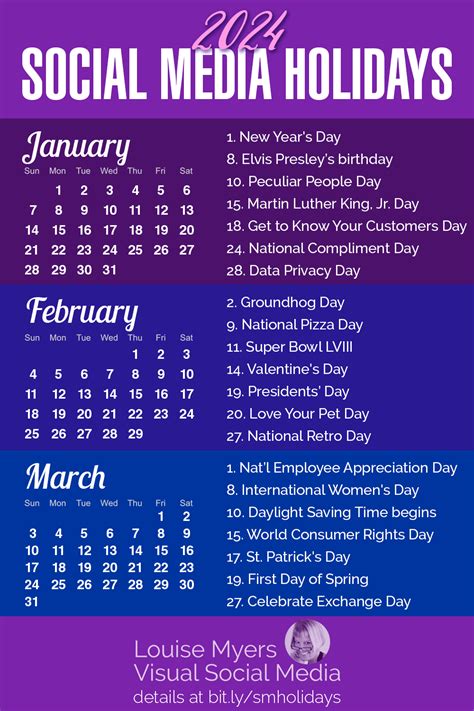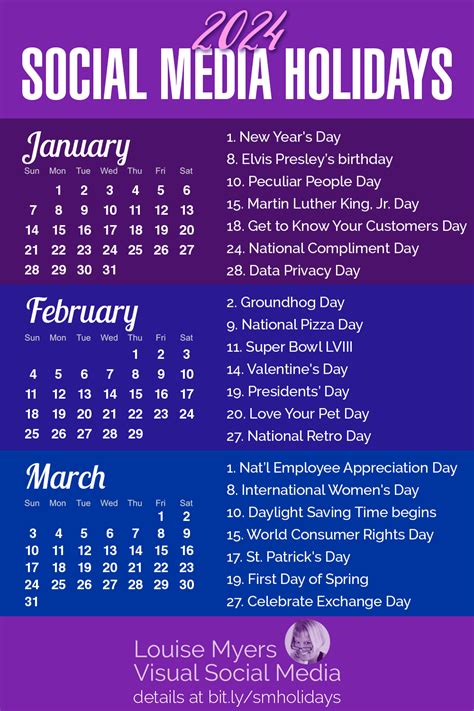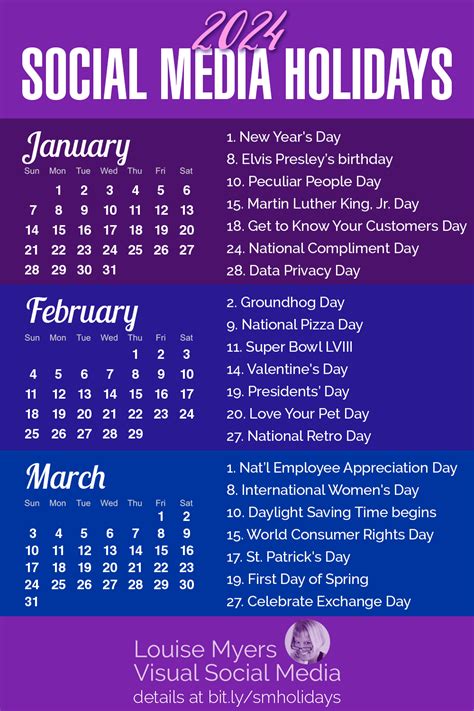Plan ahead for your 2024 social media calendar with our guide to incorporating key holidays into your marketing strategy. Develop engaging content and measure campaign success for maximum ROI and engagement.In the ever-changing landscape of digital marketing, incorporating key holidays into your social media strategy is essential for staying relevant and engaging with your audience. As we look ahead to 2024, it’s crucial to start planning and preparing for the upcoming year’s social media calendar. From Valentine’s Day to Earth Day, and from Halloween to Christmas, there are a plethora of holidays and observances that can be leveraged to create engaging and impactful campaigns.
In this blog post, we will delve into the importance of identifying key holidays, how to develop a content strategy around them, and the process of creating engaging campaigns that resonate with your audience. Furthermore, we will discuss the crucial steps of measuring campaign success, evaluating return on investment (ROI), and analyzing overall engagement. By the end of this post, you will have a comprehensive understanding of how to effectively incorporate key holidays into your 2024 social media calendar and enhance your marketing strategy.
Identifying Key Holidays
When it comes to creating a successful marketing strategy, it’s important to incorporate key holidays into your content plan. These holidays can provide opportunities for businesses to connect with their audience and drive engagement. By identifying the most relevant key holidays for your target market, you can tailor your content to resonate with your audience and create more meaningful connections.
One way to identify which key holidays to incorporate into your marketing strategy is by understanding the cultural and demographic makeup of your audience. For example, if you have a global audience, you may want to consider incorporating holidays from different countries and regions into your content plan. Additionally, it’s important to consider the values and beliefs of your audience in order to ensure that the key holidays you choose to incorporate are meaningful and relevant to them.
Another important aspect of identifying key holidays is to research trending and popular holidays that are relevant to your industry. By keeping an eye on social media trends, industry news, and customer feedback, you can stay updated on the key holidays that are most important to your audience. By doing so, you can ensure that your content is timely and resonates with your audience.
| Holiday | Relevance to Audience |
|---|---|
| Black Friday | Opportunity for sales and promotions |
| Valentine’s Day | Connection with audience through themed content |
| Chinese New Year | Appealing to global audience |
Developing Content Strategy
When it comes to developing content strategy for social media, it’s important to start by understanding your target audience. Research their demographics, interests, behaviors, and preferred social media platforms to ensure that your content resonates with them.
Next, consider your overall marketing goals and objectives. Your content strategy should align with these goals and help you achieve measurable results. Whether it’s increasing brand awareness, driving website traffic, or generating leads, your content should be tailored to support these initiatives.
Additionally, you’ll want to establish a consistent brand voice and messaging across all your social media channels. This will help to build brand recognition and create a cohesive customer experience. It’s important to maintain a balance between promotional content, educational content, and engaging content to keep your audience interested and engaged.
Finally, leverage data and analytics to measure the effectiveness of your content strategy. Track key performance indicators (KPIs) such as engagement rates, click-through rates, and conversion rates to understand what’s resonating with your audience and what’s not. Use these insights to continuously optimize and refine your content strategy for maximum impact.
Creating Engaging Campaigns
When it comes to running a successful social media campaign, creating engaging content is key. This means developing posts, videos, and other content that will capture the attention of your audience and encourage them to interact with your brand. One effective way to do this is by identifying the interests and preferences of your target audience and tailoring your content to meet their needs.
Another important factor in creating engaging campaigns is to prioritize visual content. People are more likely to engage with posts that include eye-catching images or videos. Utilizing high-quality visuals can help to make your brand stand out and attract more attention on social media platforms.
Furthermore, it’s essential to keep your content fresh and relevant. Creating engaging campaigns requires constant innovation and adaptation to keep up with the latest trends and interests of your audience. By staying current with what’s popular and trending, you can ensure that your content remains engaging and timely.
Lastly, interaction is key in creating engaging campaigns. Encourage your audience to participate in polls, surveys, and discussions to keep them engaged and invested in your brand. This two-way communication can help to foster a sense of community and loyalty among your followers.
Measuring Campaign Success
When it comes to measuring the success of your marketing campaigns, it’s important to have a clear set of goals and KPIs in place from the outset. Whether you’re running a social media campaign, email marketing campaign, or any other type of marketing initiative, having measurable objectives will allow you to gauge the effectiveness of your efforts.
One way to measure campaign success is by tracking key metrics such as engagement, click-through rates, conversion rates, and overall ROI. These metrics will give you a clear picture of how well your campaign is performing and whether it’s meeting your business objectives.
Another important aspect of measuring campaign success is analyzing the data to identify trends and patterns. By delving into the data, you can gain valuable insights into what’s working and what’s not, allowing you to optimize your future campaigns for better results.
In addition to quantitative metrics, it’s also essential to consider qualitative factors such as brand sentiment, customer feedback, and overall satisfaction. These insights can provide a holistic view of your campaign’s impact and help you make informed decisions for future marketing endeavors.
Evaluating ROI and Engagement
When it comes to running successful marketing campaigns on social media, one of the most important aspects to consider is evaluating the return on investment (ROI) and engagement metrics. It’s crucial for businesses to determine the effectiveness of their marketing efforts in order to make informed decisions for future strategies. This involves analyzing the impact of the campaign in terms of leads generated, sales conversion, and overall brand visibility.
One way to evaluate ROI is by tracking the direct impact of a social media campaign on sales and revenue. By using tools such as Google Analytics and social media insights, businesses can measure the increase in website traffic, conversions, and sales that can be directly attributed to their social media marketing efforts. This allows them to calculate the actual revenue generated from their investment in social media marketing.
Another important aspect of evaluating social media campaigns is to analyze engagement metrics such as likes, comments, shares, and overall brand sentiment. This helps businesses understand how their audience is responding to their content and whether it is resonating with their target demographic. By measuring engagement, businesses can identify which types of content are most effective in driving audience interaction and adjust their content strategy accordingly.
In addition to evaluating the quantitative aspects of ROI, it’s also essential to consider qualitative measures of success, such as brand perception and customer satisfaction. By monitoring brand mentions, customer feedback, and sentiment analysis, businesses can gain insights into the overall impact of their social media marketing efforts on brand perception and customer loyalty.
Frequently Asked Questions
What are some key holidays to consider for social media marketing in 2024?
Some key holidays to consider for social media marketing in 2024 include New Year’s Day, Valentine’s Day, Easter, Mother’s Day, Father’s Day, Halloween, Thanksgiving, and Christmas.
How can businesses incorporate holidays into their social media marketing strategy?
Businesses can incorporate holidays into their social media marketing strategy by creating holiday-themed content, running holiday-themed promotions and contests, and sharing relevant holiday-related tips and ideas with their audience.
Why is it important for businesses to incorporate holidays into their social media marketing strategy?
Incorporating holidays into social media marketing strategy helps businesses to connect with their audience on a personal and emotional level, increase brand awareness, drive engagement, and boost sales through holiday-themed promotions.
What are some tips for creating effective holiday-themed social media content?
Some tips for creating effective holiday-themed social media content include planning ahead, being authentic and genuine, using relevant hashtags, incorporating holiday visuals and colors, and engaging with your audience through holiday-related questions and polls.
How can businesses plan their social media calendar around key holidays?
Businesses can plan their social media calendar around key holidays by researching and listing down all relevant holidays, creating a content calendar, scheduling posts in advance, and analyzing the performance of holiday-themed content.
What are some common mistakes to avoid when incorporating holidays into social media marketing?
Some common mistakes to avoid when incorporating holidays into social media marketing include being too promotional, neglecting inclusivity, not considering cultural differences, and not planning ahead for holiday-themed content.
How can businesses measure the success of their holiday-themed social media campaigns?
Businesses can measure the success of their holiday-themed social media campaigns by tracking key metrics such as engagement, reach, click-through rates, conversions, and overall sales during holiday periods.



